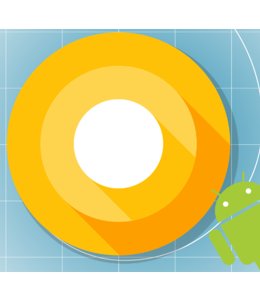| Android O on the Horizon |
| Written by Lucy Black | |||
| Wednesday, 22 March 2017 | |||
|
The first developer preview of Android O has been released with new features and APIs for developers to start trying out and ironing out the bugs. Announcing the news on the Android Developer Blog. Dave Burke warned: The usual caveats apply: it's early days, there are more features coming, and there's still plenty of stabilization and performance work ahead of us. But it's booting :).
Given the timeline for the preview releases unless you are really keen, and have plenty of time to devote to testing things that could change, you might be better to wait for a later update. Each of the milestones listed includes SDK tools, preview system images, emulators, API reference, and API diffs:
So what's new in O? Here's a summary of the list provided by Dave Burke: Background limits: Building on work begun in Nougat, Android O puts priority on improving battery life and the device's interactive performance. For this there are additional automatic limits on what apps can do in the background, in three main areas: implicit broadcasts, background services, and location updates. Background limits represent a significant change in Android but it will make it easier to create apps that have minimal impact on a user's device and battery. Notification channels: New app-defined categories for notification content let developers give users fine-grained control over different kinds of notifications — users can block or change the behavior of each channel individually, rather than managing all of the app's notifications together. Autofill APIs: New platform support for autofill, with new APIs to implement an Autofill service, will allow users to select an autofill app, similar to the way they select a keyboard app. The autofill app stores and secures user data, such as addresses, user names, and even passwords. PIP for handsets and new windowing features: Picture in Picture (PIP) display is now available on phones and tablets, so users can continue watching a video while they're answering a chat or hailing a car. Apps can put themselves in PiP mode from the resumed or a pausing state where the system supports it - and you can specify the aspect ratio and a set of custom interactions (such as play/pause). Other new windowing features include a new app overlay window for apps to use instead of system alert window, and multi-display support for launching an activity on a remote display. Font resources in XML: Fonts are now a fully supported resource type in Android O. Apps can now use fonts in XML layouts as well as define font families in XML. Adaptive icons: This new feature allows you to create adaptive icons that the system displays in different shapes, based on a mask selected by the device. The system also animates interactions with the icons, and uses them in the launcher, shortcuts, Settings, sharing dialogs, and in the overview screen.
Wide-gamut color for apps: Developers of imaging apps can now take advantage of new devices that have a wide-gamut color capable display. Connectivity: Support for high-quality Bluetooth audio codecs such as LDAC codec and for Wi-Fi Aware, previously known as Neighbor Awareness Networking (NAN), which lets devices discover and communicate over Wi-Fi without an Internet access point Keyboard navigation: A more reliable, predictable model for "arrow" and "tab" navigation that aids both developers and end users. AAudio API for Pro Audio: AAudio is a new native API that's designed specifically for apps that require high-performance, low-latency audio. Apps using AAudio read and write data via streams.The Developer Preview has an early version of a new API in order to gather feedback. WebView enhancements: An optional multiprocess mode for WebView that moved the handling of web content into an isolated process was introduced in Nougat. In O, multiprocess mode will be enabled by default and an API is being provided to let apps handle errors and crashes. As a further security measure, you can now opt in your app's WebView objects to verify URLs through Google Safe Browsing. Java 8 Language APIs and runtime optimizations: Android now supports several new Java Language APIs, including the new java.time API. In addition, the Android Runtime is faster than ever before, with improvements of up to 2x on some application benchmarks.
The next Developer Preview is timed to coincide with Google I/O when there is sure to be a lot more information.
Is the color of the O a hint about the name of the sweet treat? Or is orange just a coincidence? More InformationRelated ArticlesGoogle Changes Course For Android N
To be informed about new articles on I Programmer, sign up for our weekly newsletter, subscribe to the RSS feed and follow us on Twitter, Facebook or Linkedin.
Comments
or email your comment to: comments@i-programmer.info |
|||
| Last Updated ( Wednesday, 22 March 2017 ) |




